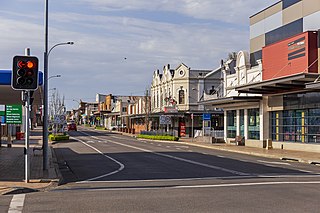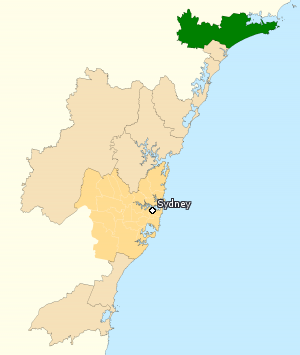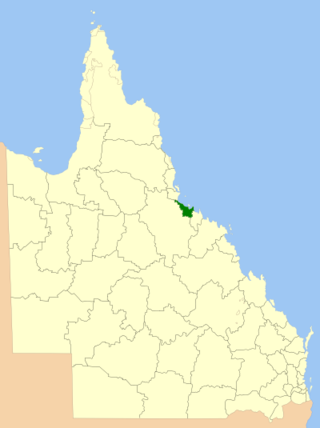
The Communist Party of Australia (CPA), known as the Australian Communist Party (ACP) from 1944 to 1951, was an Australian communist party founded in 1920. The party existed until roughly 1991, with its membership and influence having been in a steady decline since its peak in 1945. Like most communist parties in the West, the party was heavily involved in the labour movement and the trade unions. Its membership, popularity and influence grew significantly during most of the interwar period before reaching its climax in 1945, where the party achieved a membership of slightly above 22,000 members. Although the party did not achieve a federal MP, Fred Paterson was elected to the Parliament of Queensland at the 1944 state election. He won re-election in 1947 before the seat was abolished. The party also held office in over a dozen local government areas across New South Wales and Queensland.

City of Cessnock is a local government area in the Hunter region of New South Wales, Australia. The area under administration is located to the west of Newcastle. The largest population centre and council seat is the city of Cessnock.

Cessnock is a city in the Hunter Valley of New South Wales, Australia, about 52 km (32 mi) by road west of Newcastle. It is the administrative centre of the City of Cessnock LGA and was named after an 1826 grant of land called Cessnock Estate, which was owned by John Campbell. The local area was once known as "The Coalfields", and it is the gateway city to the vineyards of the Hunter Valley, which includes Pokolbin, Mount View, Lovedale, Broke, Rothbury, and Branxton.

The Division of Paterson is an Australian electoral division in the state of New South Wales. It is located just north of Newcastle, on the coast of the Tasman Sea. The division is named after federation-era poet and author Banjo Paterson and was originally created in 1949 and abolished in 1984. It was recreated after a redistribution in 1992.
Cessnock is an electoral district of the Legislative Assembly in the Australian state of New South Wales in the rural fringe of the Hunter. It is represented by Clayton Barr of the Labor Party. It includes all of City of Cessnock, part of Singleton Council and a small part of the City of Lake Macquarie.

The Mid-Western Regional Council is a local government area in the Central West region of New South Wales, Australia. The area is located adjacent to the Castlereagh Highway that passes through the middle of the area in an approximate southeast–northwest direction.

Kurri Kurri is a small town in the Hunter Region of New South Wales, Australia, in the Cessnock LGA. At the 2016 census, its population was 6,044. Kurri Kurri is the largest town in a group of towns and hamlets, including Stanford Merthyr, Pelaw Main, Weston, Abermain and Heddon Greta, called Kurri Kurri – Weston by the ABS. Its estimated population was 17,241 at 2016 census.

The City of Townsville is a local government area (LGA) located in North Queensland, Australia. It encompasses the city of Townsville, together with the surrounding rural areas, to the south are the communities of Alligator Creek, Woodstock and Reid River, and to the north are Northern Beaches and Paluma, and also included is Magnetic Island. In June 2018 the area had a population of 194,072, and is the 28th-largest LGA in Australia. Townsville is considered to be the unofficial capital of North Queensland.

Kenneth George Booth was a New South Wales politician, Treasurer, and Minister of the Crown in the cabinets of Neville Wran and Barrie Unsworth. From 1981 to 1988 he was the Treasurer of New South Wales. He was a member of the New South Wales Legislative Assembly for 28 years from 8 October 1960 until his death on 1 November 1988 for the Labor Party, representing the seats of Kurri Kurri and Wallsend.
George Henry Neilly was an Australian politician. He was a member of the New South Wales Parliament from 1954 to 1977. He was a member of the Labor Party (ALP).

Local government in the Australian state of Victoria consists of 79 local government areas (LGAs). Also referred to as municipalities, Victorian LGAs are classified as cities (34), shires (38), rural cities (6) and boroughs (1). In general, an urban or suburban LGA is called a city and is governed by a City Council, while a rural LGA covering a larger rural area is usually called a shire and is governed by a Shire Council. Local councils have the same administrative functions and similar political structures, regardless of their classification.
Rosemary Varty is an Australian politician. She was a Liberal Party member of the Victorian Legislative Council from 1985 to 1999, representing Nunawading Province (1985–1992) and Silvan Province (1992–1999).
Kearsley Shire was a local government area in the Hunter region of New South Wales, Australia.
This is a list of local government area results for the 2021 New South Wales local elections.

The 2021 South Gippsland Shire Council election was held in October 2021 to elect nine councillors for South Gippsland Shire, a local government area in Victoria, Australia.
The Municipality of Cessnock was a local government area in the Hunter Region of New South Wales, Australia.
The 1944 New South Wales local elections were held on 2 December 1944 to elect the councils of the 301 local government areas (LGAs) in New South Wales.
This is a list of local government area results for the 1944 New South Wales local elections.
The 1947 New South Wales local elections were held on 6 December 1947 to elect the councils of the local government areas (LGAs) in New South Wales.










